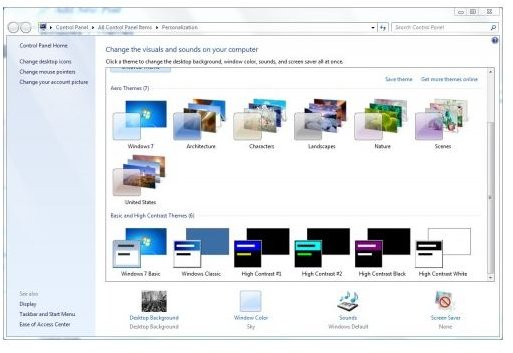How to Set Up Windows 7 Desktop Customization
The Windows 7 desktop has many of the more familiar options, but has also been revamped in a number of ways. The new Windows 7 taskbar is perhaps the most obvious enhancement of the Windows 7 interface with its new look windows. However, there is still a lot more to this Windows desktop.
Windows 7 Themes & Desktop Wallpaper
Among the new enhancements include a variety of new themes have been introduced for the Windows 7 desktop. Right-click the desktop and select Personalize, and then there are a variety of alternative Windows 7 themes that can be chosen. Several of these themes are of the Windows Aero variety, which include many of the fancier Windows effects such as transparent windows. However, as an alternative there are also more basic themes such as Windows 7 Basic, and for some nostalgia Windows Classic which is a throwback to Windows 95. As such, you can set up the Windows 7 desktop with a few themes.
Of course, changing these themes also changes the desktop background. However, you can also select from a greater range of desktop wallpaper by selecting the desktop background option from the themes window. Among the new Windows 7 desktop background options includes the desktop slideshow option which can shuffle through the selected desktop wallpaper. In addition to this, you can add your own desktop wallpaper from your picture folder.
The Windows 7 Taskbar
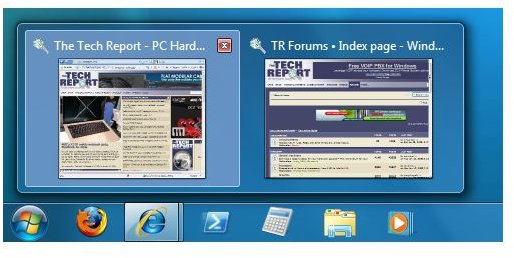
As mentioned, the Windows 7 taskbar remains perhaps the most notable desktop enhancement in Windows 7. In Windows 7 no longer are the minimized Windows rectangles, but smaller squares which include relevant application icons. These icons can be re-shuffled and reorganized with the mouse. With Windows 7 Aero there are still mini window previews of the applications, however you can now close the applications from these mini windows by selecting the small cross at the top right. On the right-side of the taskbar there is the system tray, and an Aero peek option whereby you can temporarily view the desktop when you move the mouse over the ‘Show desktop’ button on the far right of the taskbar. On the left-side of the taskbar are short-cuts to Windows Explorer, Windows Media Player, the Welcome Center, and more taskbar shortcuts can be added.
The Windows 7 Start Menu

We can’t forget the Windows 7 start menu. The start menu retains the orb that first emerged in Windows Vista, and you can still pin short-cuts to the start menu. However, the start menu now also includes Jump Lists. These are a great additional short-cut to recently opened documents and websites with applications such as Word, Excel, Firefox, and Internet Explorer. In addition to this, more specific documents can also be pinned to the Jump List if you select the pin to list option. Alternatively, if you right-click any application short-cut on the start menu & desktop you can also pin it to taskbar as a taskbar short-cut. No longer is there a My Document folder included on the start menu, which has been replaced by a personal folder under the Windows account name. However, in truth this folder remains fairly similar to Vista’s My Document folder.
Windows 7 Desktop Gadgets
Like Windows Vista you can add gadgets such as calendars, clocks, and weather forecasts to the Windows 7 desktop. However, the gadgets sidebar has now been removed and they can be added by right-clicking the desktop and selecting the gadgets option. Without the sidebar gadgets can now be placed anywhere on the desktop.
The desktop in Windows 7 therefore retains much from Windows Vista, but also adds new features. A revamped taskbar, start menu, Jump Lists, new variety of themes, background slide-show, and more flexible desktop gadgets provide plenty of new desktop options.
Image Gallery
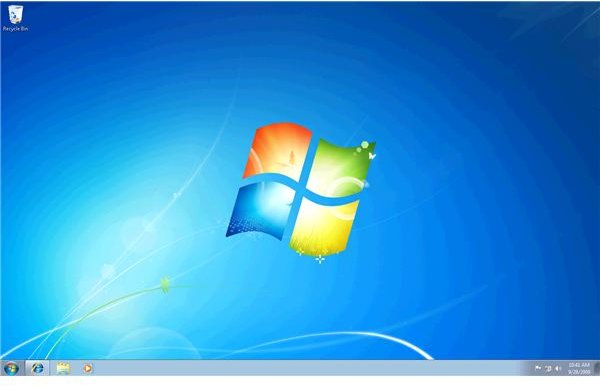
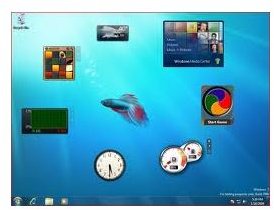

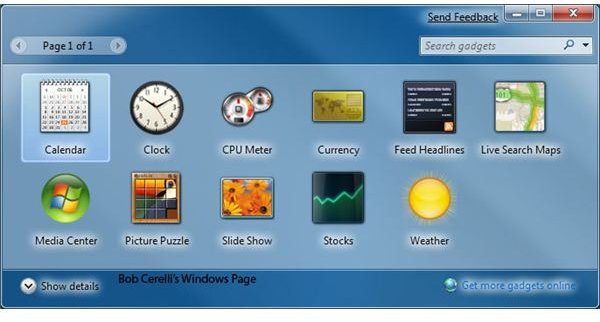

References
Images from the following websites:
- https://4sysops.com/archives/windows-7-taskbar-reviewed/
- https://www.techbabu.com/2009/09/customize-windows-7-taskbar-screenshots/
- https://www.onecomputerguy.com/windows7/windows7_sidebar.htm
- https://techreport.com/discussions.x/16222
- https://www.ghacks.net/2009/11/23/windows-7-themes/
- https://ljvhs.liwap.dnsdot.net/
- https://microsoftnews-4u.blogspot.com/2010/05/windows-7-desktop-gadgets.html
Other sources:
The Ultimate Guide to Windows 7
